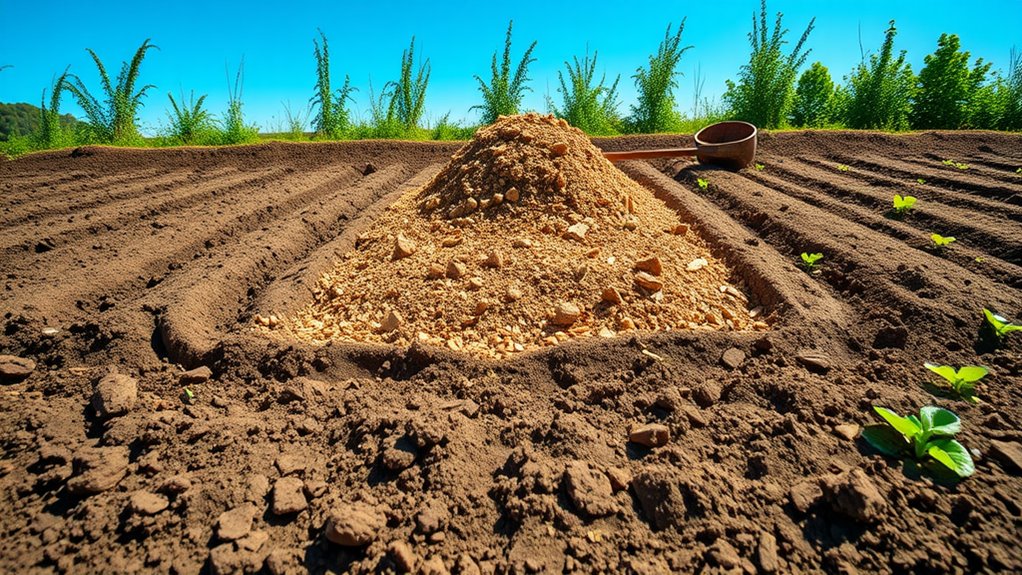This 3-Step Soil Prep Method Guarantees a Better Harvest
You’ll assess your soil’s pH, texture, and nutrient levels with simple tests to spot imbalances that hinder growth. Then, you’ll enrich it using targeted organic amendments like compost, applying them at rates of 10-20 pounds per 100 square feet to boost fertility and structure. Finally, prepare for planting by tilling to 6-8 inches, monitoring temperature, and leveling for even emergence. Master this for a superior harvest, and explore further enhancements below.
Assess Your Soil
Before testing your soil, consider its key properties like pH, texture, and nutrient content, as these directly influence plant growth.
When preparing soil, you actively test these factors using simple kits or lab analysis to identify imbalances.
This step guarantees you’re making informed decisions, preventing issues like poor drainage or acidity that hinder root development and overall plant health. Additionally, understanding the soil pH testing process helps you make precise adjustments tailored to your plants’ needs.
Enrich the Soil
Once you’ve assessed your soil’s pH, texture, and nutrients, enrich it by incorporating organic amendments like compost or manure; this boosts fertility, improves structure, and corrects imbalances for ideal plant growth.
Choose amendments based on your soil test results; apply them at recommended rates, such as 10-20 pounds per 100 square feet, and incorporate deeply.
This enhances microbial activity and nutrient availability. Additionally, incorporating organic amendments can lead to improved soil health over time, creating a more sustainable growing environment.
Prepare for Planting
After enriching your soil, prepare for planting by tilling it to a depth of 6-8 inches, which breaks up clumps and guarantees even nutrient distribution.
This step guarantees roots penetrate easily and access nutrients effectively.
For deeper preparation, focus on these aspects:
-
Carefully monitor soil temperature to guarantee it’s ideal for seed germination, as this directly affects growth rates.
-
Regularly test pH levels so you’re adjusting them to the ideal range for your crops.
-
Methodically level the surface to maintain uniform planting depth, therefore promoting even emergence.
Additionally, incorporating essential techniques such as organic matter can significantly enhance soil structure and fertility.

